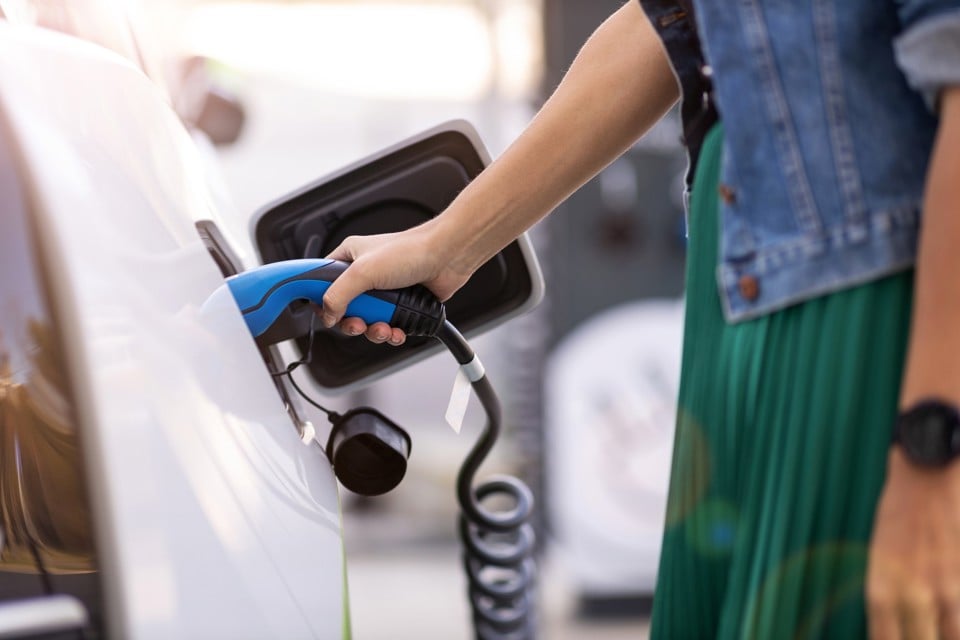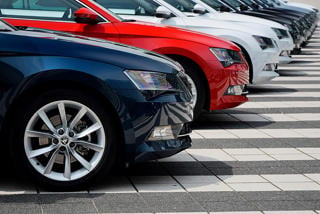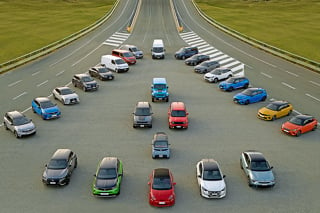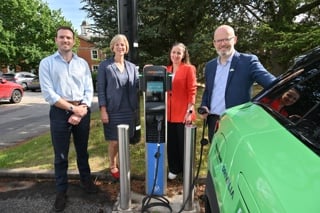The UK’s leasing fleet has surpassed pre-pandemic volumes, defying a gloomy economic landscape, thanks to an uplift in demand for electric vehicles (EVs), according to the British Vehicle Rental and Leasing Association (BVRLA).
In the association’s latest Leasing Outlook Survey, it reports a 0.3% growth in the total fleet at the end of 2022, despite vehicle supply issues continuing to impact availability.
The number of salary sacrifice cars rose by 34% year-on-year, between Q4 2022 and Q4 2021, to 42,616 vehicles, maintaining last year’s double-digit growth trajectory.
But growth was driven by the continued resurgence of business contract hire, up 4% year-on-year, thanks largely to the long-term clarity provided on electric company car tax rates, says the BVRLA.
It has helped EVs become the dominant force on the fleet, with more than half (53%) of new business contract hire car additions battery electric vehicles (BEVs).
Average car emissions on the BVRLA leasing fleet have improved 16% in the past five years and are down to 95.6g/km as a result.
BVRLA chief executive, Gerry Keaney, said: “On the backdrop of an incredibly turbulent year, we are again reporting growth.
“As we face inflationary cost pressures, high interest rates and global uncertainty, it is vehicle supply that is pulling up the handbrake.
“A favourable tax regime coupled with the agility of our sector is creating demand for vehicles unlike anything we’ve seen. Supply simply must catch up.”
The latest figures published by the Society of Motor Manufacturers and Traders (SMMT) show fleet registrations drove the new car market in March, with 40% more company cars sold year-on-year.
Overall new car registrations were up by 18.2% to deliver the best ‘new plate month’ performance since before the pandemic.
However, with deliveries to private buyers up by just 1.4%, the overall increase was thanks to fleet and business registrations.
From the 287,825 new cars delivered, some 148,602 were registered to fleets, 40% more than the 106,177 company cars delivered in March, 2022.
Diesel dominates van market
Leasing companies have outperformed the finance market in the light commercial vehicle (LCV) sector, maintaining the size of their total fleet at 499,223 LCVs in Q4 2022, just above the 498,280 total for the final quarter of 2021, despite new LCV sales declining by 20.6% year-on-year.
Persistent supply chain issues meant leasing companies could not fulfil orders, although their total end of year fleet was still 82,634 vehicles larger than it was in Q4 2019.

Business contract hire accounts for 69% of LCV agreements, followed by finance lease with an 18% share, and leasing companies expect both forms of leasing to rise as fleets seek ways to afford new vans, given the steep rise in acquisition costs.
However, for the van market, diesel remains the preferred fuel type. EVs have won the battle for the hearts and minds of company car drivers, but two further battlegrounds remain, says the BVRLA,
“Our van orders are still 99% diesel, and e-LCV range remains a real issue, especially for fully laden vans,” said one leasing executive.
“A real-world range of less than 100 miles represents too much of a risk for a lot of businesses, which don’t want their drivers stopping for an hour to recharge.”
Vans have led the growth of used vehicle leasing, as leasing companies find innovative ways to overcome vehicle supply issues and flatten any RV risks associated with new technologies.
From a low base, used van leasing has grown 123%, demonstrating the high demand and potential opportunity, says the BVRLA.
Longer initial lease periods are also becoming more popular due to the reliability of electric vehicles, allowing those with tighter budgets to transition.
Keaney said: “New business models and changing usage patterns are demonstrating the adaptability of the sector.
“The data paints a picture of innovation, resilience, and an unwavering commitment to keep people mobile. To surpass pre-pandemic levels is a crucial milestone and enables us to look forward with optimism.”





















Login to comment
Comments
No comments have been made yet.